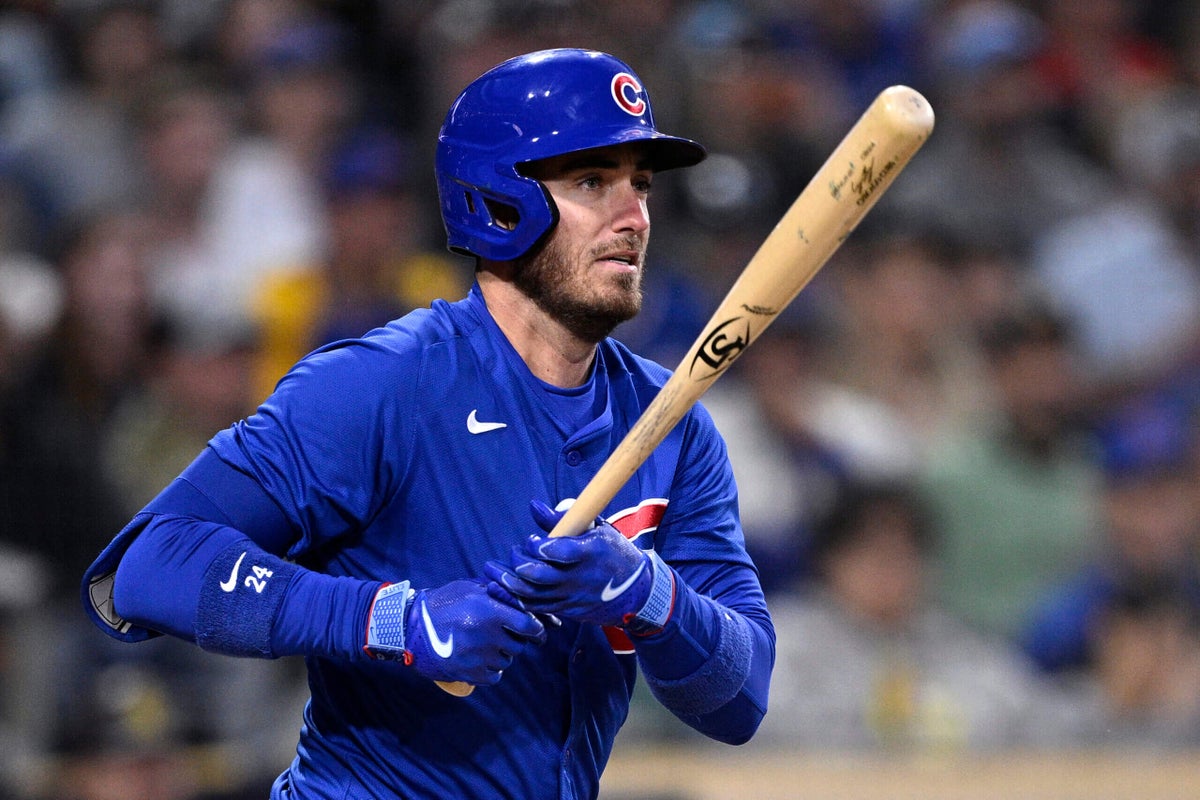Trade details: New York Yankees acquire OF/1B Cody Bellinger and cash considerations from the Chicago Cubs for RHP Cody Poteet
The Yankees needed another bat after the departure of Juan Soto, and they got one on the cheap, so to speak, trading a replacement-level arm to the Cubs and taking on about 90 percent of Bellinger’s remaining contract. Bellinger makes the Yankees somewhat better, but I don’t think he does enough to address their lineup questions, and he may end up pushing their top prospect — Jasson Domínguez — out of his best position.
If I were in the Yankees’ shoes, I would have preferred to acquire Seiya Suzuki, whose OBP skills would be a perfect fit for a Yankees lineup that is going to have serious problems putting guys on base. Among Yankees currently on their roster, Aaron Judge is the only one who had an OBP over .324 last year, and the only one who had an OBP over .319 against left-handed pitchers.
Bellinger’s OBP last year was .325, just a tick below his career OBP of .334, and his OBP against lefties in 2024 was just .305 (career .321). Adding him to a lineup that will already have left-handed regulars at a minimum at second base (Jazz Chisholm Jr.) and catcher (Austin Wells) — as well as the switch-hitting Domínguez, who is substantially better batting left-handed — isn’t solving any of their main offensive problems.
Trading for Suzuki rather than Bellinger would also have allowed the Yankees to keep Domínguez at his natural position of center. It appears that New York intends to play Bellinger in center, even though he’s just an average defender there, and slide Domínguez to left, where he’ll eventually be a plus defender, but struggled in his first stint there in 2024. They could also put Bellinger at first base, where’s he’s still plus, and restore Domínguez to center, assuming the club misses out on or declines to sign one of the remaining free-agent first basemen, like Christian Walker, or decide instead to sign outfielder Teoscar Hernández.
Bellinger’s ability to play center and first base leaves flexibility for the Yankees to acquire either another outfielder or a first baseman. (Chris Coduto / Getty Images)
Bellinger does have pull power, and as a left-handed hitter, he could get a few extra homers out of Yankee Stadium’s short right field. His pull percentage was actually at a career low 40.5 percent this past season, which is still higher than the MLB average, and I assume the Yankees will encourage him to restore his higher pull rates of prior years. Even his relatively low home run total from 2024 of 18 would rank third among returning Yankees, behind only Judge and Giancarlo Stanton.
I’ve buried the lede a little here, though, which is that the Yankees got Bellinger for free. They traded Cody Poteet, a 30-year-old right-hander who has been a replacement-level pitcher by FanGraphs’ WAR, which is likely more accurate than bWAR in his case given his .237 BABIP allowed in the majors and .302 BABIP allowed in Triple A. (That is, he’s been super lucky in the majors, because his time in Triple A says he has no special ability to limit hits on balls in play that would support him sustaining such a low major-league BABIP going forward.)
The Yankees are even getting $2.5 million from the Cubs in each of the next two years, so they’ll pay Bellinger $25 million this year, and $22.5 million in 2026 if he doesn’t opt out. (If he opts out, the two clubs will split his $5 million buyout.) That’s a bit rich for his 2.2 WAR performance this past season, but a steal if he gets back to his 4.4 WAR performance from 2023. I can talk all day about how Suzuki was a better fit, but he also would have cost them something more in prospects or young big leaguers than Bellinger did. Suzuki also has a no-trade clause, which may have complicated a deal.
I’d be a lot more unhappy to see the Cubs dump a salary had they not just made a big swing for Kyle Tucker, and if this makes them more inclined to go trade for or sign a No. 2 starter, than all the better. The Cubs’ owner shouldn’t be crying penury, but if moving Bellinger — a fine but ultimately superfluous player on this roster, which still probably has more outfielders than they can play — makes adding that one additional arm feasible, I’m good with it.
The Cubs need one more arm ahead of their passel of back-end starters, including Jameson Taillon (who bounced back to 2.2-2.3 WAR last year), the forever underrated Javier Assad, Jordan Wicks, and Ben Brown (who I think is probably better suited to the bullpen). As with their lineup prior to the Tucker trade, they’ve assembled a really good rotation of 2-3 WAR starters. Justin Steele and Shota Imanaga were at exactly 3.0 fWAR last year, although Steele is better than that when fully healthy. They need a better starter out front, whether it’s ahead of or just behind Steele.
The budget room they just regained from trading Bellinger should go right into pitching — not into Tom Ricketts’ pocket.
(Top photo of Bellinger: Orlando Ramirez / USA Today)

